Hidden clues and wombat poos: best of 2021
We’re looking back on the year that’s just been, and what a year 2021 was. Once again, Covid dominated the headlines, and alongside the climate crisis and seemingly endless extreme weather events, it feels like we’ve been bombarded with negative news stories all year long. But fear not! Sally Le Page shares only the good news stories that we’ve covered here on the Naked Scientists, such as how we may have solved the perennial train delays caused by leaves on the line, and even how we cracked the ultimate mystery: how wombats make their poos cube shaped.
In this episode
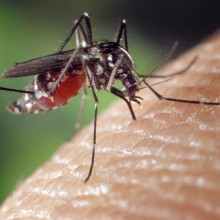
- New malaria vaccine reaches 75% efficacy
New malaria vaccine reaches 75% efficacy
Katie Ewer, University of Oxford
Scientists from the University of Oxford have produced a new malaria vaccine that, they say, is more than 75% effective - making them the first to meet a crucial target set by the World Health Organisation. They’ve just completed their Phase II trials in West Africa, where they were able to reduce malaria infections in a group of children by three quarters. Chris Smith heard from immunologist Katie Ewer…
Katie - Yes, it's a great achievement. We've been working towards this for quite a long time now, so to finally have this result after so long and so many different vaccines that we've tested in clinical trials... it's great.
Chris - How does the vaccine work?
Katie - The vaccine primes your immune system to make antibodies against one of the main proteins on the surface of the malaria parasite, so that when you get bitten by a mosquito that's carrying malaria, those antibodies bind up those parasites and stop them from setting up an infection in your body.
Chris - People have been trying to do this for a long time though, haven't they? We've seen many, many trials of malaria vaccines - they don't seem to have been very successful. So why have you managed to triumph where they haven't?
Katie - Malaria is a really complicated infection to make a vaccine against. It has a life cycle in both the human and the mosquito host. And so depending on which part of the lifecycle you want to target, you might need a different type of immune response. So when you make a vaccine against a simple virus, you've only got seven genes to choose from; malaria has around 5000, so just deciding which part of the parasite you want to use as a target for your vaccine is a huge job. The part of the lifecycle that we target with our vaccine takes place just after you get bitten by that mosquito that's carrying the malaria parasite. And we're trying to capture that window - with an immune response - between those parasites going into your skin, and getting to your liver. And that window is only about half an hour to two hours. So it's not long for the vaccine to act to block that infection.
Chris - Ashish, from a public health point of view this must be music to your ears, because malaria is one of the leading causes of death worldwide, isn't it?
Ashish - Oh, this is extraordinary. And we're all going to hope that more data come in supporting this. Over the years, I have always said that if we got a vaccine that was 30-40% effective, we would be thrilled, it would make an enormous difference. So a potential vaccine of 75%... and most of the people who die of malaria are children, so it's particularly an awful disease. And while we've made progress globally, it still kills hundreds of thousands of people every year. So this is extraordinary. I'm trying not to get overly enthusiastic, because we want to see bigger trial data, but everything I've seen so far makes me very, very hopeful.
Chris - Taking that point forward, Katie - because so many victims are children, when is the best time to intervene? Do you intervene in pregnancy so that young newborns don't catch it? Because that's a big issue with malaria, isn't it, when you get a newborn or a young kiddie who catches it and then they don't fight it off as effectively as an adult, and they often become victims.
Katie - Yeah, that's right. And as we just heard, most children who die of malaria are under the age of five in sub-Saharan Africa. So the plan really, because malaria is predominantly a seasonal infection, is to give those children immunity before the start of the malaria season so they have lots of antibodies ready for when those parasites and mosquitoes start biting. So we're looking at vaccinating children in their first year of life before the malaria season starts, and then giving them booster doses every year to top up those antibody levels, before they're exposed to that during the malaria season going forward.
Chris - Is this the sort of vaccine that's pretty stable? Because obviously it's easy to make a vaccine which when you have the perfect environment, such as a laboratory, you can keep fresh; but when you take it out into the back of beyond, where there is no electricity supply, there is no fridge, it's a different story. What's the vaccine construct, as it were?
Katie - Yep, that's a really important point. And people who work on malaria vaccines know that there's no point in making a very expensive vaccine that you have to store in a freezer. It's got to be cheap, it's got to be able to survive a very rural cold chain, and we've got to be able to make hundreds of millions of doses of it. So this is a protein and adjuvant type vaccine - not new technology. It's administered in three doses, as I mentioned. So we really do think that this is feasible to deploy on the scale that's going to be required to really have an impact.
Chris - Next step will presumably be a much bigger trial to then prove it works, it's safe, and really, how effective it can be?
Katie - Exactly. So the data so far is from a phase II trial which was in 450 children in West Africa. We now have approval to start a phase III trial, and that will be in four countries in both East and West Africa, so different levels of malaria transmission intensity; and that will be in 4,800 children. So a much bigger sample size to really, really check for safety and protection in different communities and different populations.
Chris - And of course, one of the most successful - Anna - interventions against malaria hitherto has been the bed net. And that wouldn't exist without a materials scientist!
Anna - Yeah, absolutely. And in the 20th century, it was really a triumph of material science that we were able to mimic the natural plastics that we had - which was things like natural rubber - to make very cheap, easy to produce plastic textiles. And these have then obviously gone on to form our clothes, and all sorts of different textiles in our homes, but also to make nets that will protect against diseases like this.
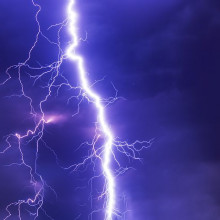
- Lightning's role in the beginning of life
Lightning's role in the beginning of life
Benjamin Hess, Wheaton University
To Earth science now and the origins of life on our planet; and when Benjamin Hess was a student at Wheaton University in Illinois, he had no idea that a local storm would change the course of his career and produce a remarkable piece of geology that has shed light, or rather, lightning, on how life may have got started here. In a new study, which he explains to Phil Sansom, he’s shown how bolts of lightning may have first endowed the early Earth with one of the crucial building blocks of life: the element phosphorus...
Benjamin - Basically lightning struck somebody's back garden, their property nearby. They called up the department of geology at Wheaton College and were like, "Hey, there's this thing in our backyard, do you want to come check it out?" And some professors showed up and realised it was a lightning strike.
Phil - And when you say "it", what exactly was it?
Benjamin - It was a lightning strike glass called a fulgurite. So when lightning hits the ground, it heats it to thousands of degrees Celsius and melts it immediately. And then it reforms. So it was like this tree trunk-like structure under the ground, with branches coming off the bottom.
Phil - And the size of a tree trunk too, yeah?
Benjamin - Yeah. So the total mass that was collected was about 25 kilograms of material. So like a fair sized tree trunk under the ground basically.
Phil - Is that kind of geologist Christmas?
Benjamin - Yeah. I mean, it's rare to find something so interesting in the flat plains of the Midwest. Let me tell you that. And I just started prodding at it basically, with whatever analytical techniques I had access to at Wheaton College. And there were a few little small spheres of something, that I didn't know what they were, using the scanning electron microscope, which essentially tells you the elemental composition and the structures of the things you're looking at, that actually allowed us to finally figure out what these metal spherules were. And it turns out that they were an iron phosphide, and phosphide is a reduced form of phosphorus, meaning it's no longer bonded to oxygen, which is really weird because we live in a very oxygenated atmosphere. So it's hard to make that happen.
Phil - So a rare mineral?
Benjamin - Yeah. Something that you really would not see. I've never seen a phosphide before in any rock. When I first found it, I was kind of like, huh, that's strange. But when I started reading the literature on what this mineral is, it's a mineral called schreibersite. The most well-known locality where it shows up is in meteorites, because there's less oxygen out in space when meteorites are forming. And it turns out schreibersite is thought to be one of the most widespread sources for phosphorus for life on early Earth, the formation of life.
Phil - Wow. This is a big jump.
Benjamin - Yeah, that's what I thought too. I was like, this is crazy. What's this meteorite mineral doing in this lightning strike glass, and you know, meteorites and origins of life. And it's like, hold on. This could actually be a really big story.
Phil - How so? Where is phosphorus important to the picture and why is it such a big deal to try and get a hold of it?
Benjamin - Phosphorus is one of the essential elements for life. It forms a lot of structural and functional elements in cells. Like it makes up the backbone of DNA and RNA, the double helix structure. The problem is it's trapped in minerals that are common, but insoluble and unreactive. So you basically can't use the phosphorus. So the question is where do you get phosphorus, that's free to react and make molecules needed for life.
Phil - And it's this mineral?
Benjamin - Yeah, that's one of the best solutions scientists have come up with. They found this phosphide mineral, schreibersite, because it readily reacts with water to free up phosphorus. But we saw this in a lightning strike and we thought, wait a minute, maybe lightning could also be a source.
Phil - As opposed to meteors, you mean?
Benjamin - Not as opposed, but in addition.
Phil - How do you actually figure out then, whether this is a likely thing to have happened billions of years ago?
Benjamin - That is really the big question that took up the bulk of the time writing this study, trying to come up with a convincing estimate. The three big things are, you need to know how many lightning strikes are happening. You need to know how much phosphorus was in the rocks that they were striking, and you needed to know how much phosphorus each lightning strike turns into schreibersite or something similar that can be available for prebiotic chemistry. Based on our calculations, we think that lightning was providing about as much phosphorus as meteorites.
Phil - Doesn't it kind of remind you of a Frankenstein sort of situation? I mean, the popular idea of creating life involves a lightning strike. And it's crazy to imagine that this was partly what actually happened for us to come along.
Benjamin - Yeah, absolutely. And the cool thing about this mechanism is it can operate on other planets as well. After the solar system forms meteorites kind of get cleared out by planets. So there's kind of a cutoff window for when they can provide enough phosphorus for life. But if you have a stable atmosphere, lightning is a mechanism that can operate indefinitely.

- Shark pre-birth battles
Shark pre-birth battles
Deborah Foote, The University of Queensland
Let’s take a peek at how sharks begin their lives. These fish have three main ways to make baby sharks, one is by laying eggs and another is by giving birth to live young. Some species, like grey nurse or sand tiger sharks, use a mixture of the two and it can get brutal: baby sharks eat each other inside their mother! To dive deeper into how sharks reproduce, Charlotte Birkmanis spoke with Deborah Foote.
Charlotte - With everything going on, life is hectic at the moment. So how about a beach walk? Walking along the beach, you kick something with your toe. After the initial surprise wears off and you stop the dog from trying to eat it, you see a tough, dark brown spiral, about eight centimetres wide and 15 centimetres long. You dust the sand off it, stop the dog from trying to eat it again and realise it's an egg case from a Bullhead shark. And although they look quite different from the traditional idea of an egg, these empty egg cases occasionally wash up all over the world. This gets you starting to think about sharks, and of course a certain tune comes to mind... There is so much more to these creatures of the deep than just their teeth, and we have so much more to learn about them, but let's start from the beginning.
Charlotte - Where do baby sharks come from? Egg-laying is used by a small number of shark species. These eggs are often palm sized and come in a variety of colours, shapes, and textures, depending on the species of the shark. We often call these mermaid purses. Some shark species carry the young in a similar way to us, with the baby in a womb attached to its mother with a placenta, but other shark species do something in between. They produce eggs, but don't lay them. The eggs develop inside the mother and are nourished by an egg yolk until they're ready to hatch, and then they're born live. Let's find out about one species that has one of the most fascinating starts to life, though I might be a bit biased because I'm a shark scientist! For them, life starts with a cannibalistic pre-birth blood battle. It's a shark eat shark world out there.
Deborah - In Australia we call them Grey Nurse sharks, but they're also known as Spotted Ragged Tooth sharks or Sand Tiger sharks in other places in the world.
Charlotte - That's Deborah Foote from the University of Queensland
Deborah - And the pups will hunt and consume their brothers and sisters while in utero.
Charlotte - Now that is some intense family rivalry going on right there! But there's also some competition going on at the genetic level as well.
Deborah - The mother will mate with multiple partners, the pups could have different dads. Only one pup ends up being born from each uterus.
Charlotte - Yeah, you heard that right, Grey Nurse sharks have more than one uterus - they have two!
Deborah - Because they have eaten the other brothers and sisters, so by the end of it they've essentially had one father for their offspring. The first pup that hatches, so the biggest one, is the most likely to be the surviving pup because they can eat its small brothers and sisters, which are usually the ones that are from other dads.
Charlotte - But the food supply doesn't end there - after they're finished snacking on their siblings, their mother keeps the canapes coming by supplying a virtual conveyor belt of unfertilised eggs to nourish their offspring. This gives them quite the advantage when they're out in the world and have to start fending for themselves.
Deborah - They're born quite large, so up to about a metre total length, which is quite big if you're wanting to avoid being eaten by bigger fish. They've had practice already feeding themselves by eating eggs and other embryos in the womb.
Charlotte - They can also swim in the womb and even go from one uterus to the other, this may help them access those little hard to reach eggs and embryos.
Deborah - One of the reasons that this mode of embryonic nourishment has developed - so being able to feed itself inside, practice swimming inside - is that then they're at a competitive advantage when they get to the outside world because they already know how to feed themselves, they're already well-practiced at swimming and because they're quite big, they're less likely to be eaten by other predators.
Charlotte - Although somewhat scary looking Grey Nurse sharks are not aggressive. But the pups? They sure are feisty!
Deborah - The researcher that discovered that Grey Nurses eat eggs while in the womb to nourish themselves had cut open a dead pregnant female shark and was reaching inside to have a look inside the female reproductive organs, felt like he had had a bite on his finger. It wasn't enough to puncture the skin, and of course then when he opened up further and had a look at the pups, he realised that they had quite well advanced dentition. So a lot of baby sharks, before they're born, have a sheath over their teeth, but that is not the case in Grey Nurse. They have nice sharp teeth for eating those eggs and the other embryos as required during gestation.
Charlotte - And this pregnancy can go on from nine to twelve months, that's a long time for the Mum to be carrying around pups squirming around and eating each other inside her. So the next time you see a shark gliding around, or watch one on TV, think of the investment that the mother has gone into to get it this far
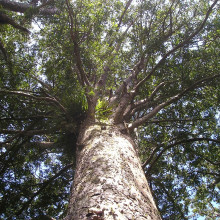
- Kauri trees reveal ancient geomagnetic chaos
Kauri trees reveal ancient geomagnetic chaos
Chris Turney, University of New South Wales
Australian scientists have dug up evidence connecting multiple massive shake ups to the prehistoric world - the extinction of the Neanderthals, the appearance of cave art, massive swings in global temperature and climate change - to a weakening of the planet’s magnetic field nearly 42,000 years ago. Adam Murphy reports...
Adam - Earth has a magnetic field. And it does more than just point your compass one way or the other; it keeps the planet safe from the sun. Without it, particles beaming in from the sun would just strip off the ozone and leave the planet vulnerable to massive doses of UV radiation. But it's not static. It changes, it weakens, and occasionally it flips all together. One such weakening happened about 42,000 years ago, and when it happened, a lot of other big things were happening as well.
Chris - Massive growth of the ice sheets over North America; shifting tropical rain belts; shifting winds over the Southern ocean; the extinction of megafauna in Australia and more arid conditions; the demise of the Neanderthals; all happening effectively at the same time. And precisely coincident just when the poles were switching.
Adam - That's Chris Turney from the University of New South Wales, who's been studying this changing in the magnetic field, which is called Laschamp event. One issue when you're looking back that far, though, is pinning down exactly when something happened. Did the magnetic field change before or after these other things? And this new research has been pinning a much more accurate date using New Zealand's plant life.
Chris - There are these beautiful, big trees; several metres across, but can live up to two millennia; they're called kauri. They've been there for millions of years. And effectively, these trees have died and fallen into peat bogs and wetlands, and then been beautifully preserved. As a result of which, these trees provide a year by year record of a climate, through the patterns of the growth rings, but they also photosynthesise the carbon from the atmosphere, and lay that down as wood. And that gives us a measure of the radioactive levels of carbon from the upper atmosphere. And during the Laschamp - during the switch from North to South and South to North over several hundred years - the magnetic field effectively collapsed almost to nothing, less than 6% of what it is today. And the practical upshot of which was the shield - protecting the air for all these high energy cosmic rays formed from supernovae - basically just was flung wide open. And as a result, what you see in the trees year by year is this huge spike in radioactive carbon which is laid down in the trees. You find this big spike, so it's really distinctive.
Adam - Because this happened 42,000 years ago, and with a love for the Hitchhiker's Guide to the Galaxy, the team have named all this, the magnetic field changes and the events that followed, the "Adams Event" after author Douglas Adams. But what would it have been like to live through?
Chris - Aurorae through the skies; lightning bolts; people were hiding out in caves... in fact we see an explosion of rock art at that time, which implies people were actually hiding away, because there would been increased UV and terrible climate changes. It must've seemed like the end of days, it must've been an extraordinary time to live from. And it would have gone on for decades. During this Laschamp period the sun's activity dropped a lot as well. And it's almost like the perfect storm, you've got a weaker magnetic field... everything's like the worst case scenario possible.
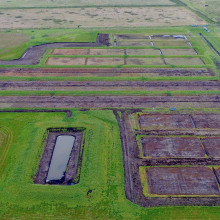
- Protecting peat to protect the planet
Protecting peat to protect the planet
Lorna Parker, Water Works
Sally Le Page took a walk through this endangered habitat to find out more about the history and science of peat bogs and what is being done to save them...
Sally - I’ve managed to escape the home office to go on a little walk through one of the key ecosystems when thinking about climate change - peat bogs. Here in Cambridgeshire we have a vast expanse of lowland peat called the Great Fen, where I am now, part of the Fens that represents 27% of England’s peatlands. Peat is a remarkable substance, and we're not just talking about anyone called Peter! Peat is a type of soil that forms over thousands of years in wet, boggy conditions. Moss plants like sphagnum moss photosynthesise and absorb carbon dioxide in the air, using that carbon to grow. In normal soils, when plants die, microbes use oxygen to break down the dead plant material releasing some of that carbon dioxide back into the atmosphere. But because peatbogs are so waterlogged, there isn’t enough oxygen for the moss to break down and so as long as the peat stays wet, the carbon is trapped.
Sally - This makes our peatlands incredibly important stores of carbon. Peatlands cover only 3% of the world’s land surface, but hold 25% of the global soil carbon. And the UK has more peatland than vast majority of countries around the world - 10% of our land area is covered in peatland habitats. It’s estimated that there is over 3 billion tonnes of carbon stores in the UK’s peatlands, which is equivalent to all the carbon stored in the forests of the UK, Germany and France combined.
Sally - There we go. Over this little wooden bridge.
Sally - Now, not only is the peat disappearing into the atmosphere through oxidation, the dry peat can be literally blown away in the wind. As a result of all of this the land is sinking.
Sally - Here we are, this is where I was walking to. I am stood in front of two, what look like Victorian lamp posts on the edge of a wood in the middle of nowhere. Very bizarre. They are about three of me tall; what's that, four metres tall? And they're called the Holme Posts. As I get closer I can see these black labels with years on them, a bit like when you mark off your kids' height on a door frame to measure how much they're growing, but unfortunately these markers are not measuring growth. Quite the opposite. The first one at the very top I can just about make out says 1848. That is just the year before they drained the mere and with an awful lot of foresight they pushed these posts down as far into the ground as they could go until they reached the solid clay layer below. Back in 1848 the top of this incredibly tall post was level with the ground. Then as they drained the mere, I can see the next marker down is 1860, that's already a good one and a half, two metres down. That drop in the level of the land is mostly from all of the water being removed. Then we go down further 1870, 1875 we're now at my eye level, 1892 we're at my belly button. Then of course my feet are currently at ground level in 2021. That is four metres worth of carbon stored in that peat that is now released into our atmosphere.
The Wildlife Trust are behind restoring this Great Fen for biodiversity, but they're also researching ways in which we can use the land productively to grow food and building materials without draining and degrading the peat soil underneath. A few days earlier, Sally travelled down the road to an experimental farming site on the Great Fen called Water Works to find out more from restoration manager, Lorna Parker.
Lorna - The project is called the Water Works project, and it's an exciting opportunity to showcase a new form of farming. Up to two centimetres of soil lost in terms of land height every year. In places that soil is already very shallow, but even in the deeper areas, you might be looking at another 80 years of farming and then no more peat soil left anyway, and we need to find another choice.
Sally - What would the farmers do when the peat runs out?
Lorna - Underneath the peat is a layer of really heavy clay. So it's much harder to farm. And before you get there, a lot of this peatland is actually quite acidic as well because we were at the seaside about 5,000 years ago. There's all sorts of geology under our feet that make it very complicated to farm.
Sally - Either it's 80 years of farming vegetables, business as normal, and then kind of farming crisis for this area. What's the alternative?
Lorna - That's what we're hoping to show. We're kind of trying to demonstrate a new form of farming, which will look at crops that you can grow in wet soil. We can trap that carbon, lock that carbon back in, but also hopefully produce food, fuel, fibre and medicines.
Sally - This is the fab word 'paludiculture'.
Lorna - It's a good one isn't it? It will be a word that most people won't have come across before. 'Paludi' is 'swamp', so it's swamp agriculture. What we're going to do is go for a walk on our wet farming pilot project, the Water Works project, and have a look at some of the new crops that we're going to grow and hopefully excite you about the possibility of the things we can do with those crops in the future.
Sally - I'm already very excited. The cows are already very excited. Let's go. We've walked over some little raised strips. We walked over some ditches, where are we now?
Lorna - Okay, so we're in the corner of one of our new wet farming beds. This one we're sat in at the moment is what we're hoping will be a future food crop for the fens, and which is manna grass. It's a cereal crop, which would need some crop development, but could be a porridge or a sort of flour.
Sally - I'm looking at one of these seed heads now. I mean, it's not much to look at compared to an ear of wheat for example. You can barely see the seeds. What will the seeds look like?
Lorna - They'll be small, like a kind of millet-type grain, that you could have in your posh ancient grain porridge for example, or you could mill it into possibly low gluten flour.
Sally - You've got to ask, what does it taste like?
Lorna - I don't know yet, because this is our first year. So we haven't harvested any. I think the seed is so precious at the moment, we'll probably grow more plants with it rather than eat it.
Sally - You're going to spend years of work creating this food that you don't even know tastes any good?
Lorna - I hope so. We can add a jam to our porridge. I'm sure it'll be fine.
Sally - When you're thinking of plants that can feed lots of people in wet soil, the automatic choice would be rice. So why aren't you growing rice here?
Lorna - We're looking at rice. The climate in the UK is not ideal for rice at the moment, but you know, with global warming it's going in the right direction. Our plant nursery is actually looking at different strains of rice to find ones which grow in the most similar climate to what we have here.
Sally - As you can probably hear, this field is a lot wetter than the other one.
Lorna - Yeah. We've come to have a look at our bullrush field.
Sally - And what can we use bullrushes for?
Lorna - Bullrush is pretty epic as well actually. It's got a structure when it grows, where it traps lots of air inside its stem. It can be absolutely fantastic for fibreboard, so for construction materials that insulate at the same time. For cavity wall filling, you can shred it and blow it in, in place of artificial products. It would be really exciting, I think, to grow products and then build local houses from something that's sourced only a few miles away.
Sally - Yeah, totally.
Sally - We are next to probably one of the biggest plots, I would say, of the ones we've been to and it's covered in - very familiar to any allotment grower - a weed membrane. What is going to be here?
Lorna - Okay. So we've got about 150,000 plugs of this tiny bog moss that we're going to plant of several species underneath the mesh, and it will grow into a sort of carpet of green under there which will be a really good crop for us to harvest and lock that carbon in the soil.
Sally - Growing moss as a crop. How is that going to be useful?
Lorna - There's lots of ways. I could talk for hours just about the moss. Moss is really exciting. One of the most exciting things that we're hoping to do with the moss here is grow it and harvest it as a substitute for compost, for growing vegetables.
Sally - Right now there's been this big move of not buying compost that's got peat in it, right? Is this what's going to be in the bags of compost instead?
Lorna - We're hoping to go bigger than that. We're hoping this will be what growers of vegetables that you eat in the supermarket are going to use to grow their small lettuce plants, for example, rather than buying in peat from peat that's been harvested from peat bogs in the wild.
Sally - Wow. Not only will this moss stop people digging up the peat for the sake of the peat. It will also stop the peat here from drying out and we still get vegetables.
Lorna - Absolutely. The moss is amazing because it can control its own environment. It can control its own water. It can control weeds. It's antibiotic. It's super absorbent. It's like a hero plant.
Sally - You really are in love with this moss aren't you.
Lorna - It's a bit of a worry, isn't it?
Sally - If you had a magic wand, what would you do with all of the peat bogs and former peat bogs in the East of England?
Lorna - Most of the peat here is farmed. I would like to see ways that we can use it productively because that's a really important part of the local economy and the local culture, but in a way that can protect it forever. If we don't do something now it will be gone for future generations. If we can do that in a sustainable way, which has all these other benefits and build our houses from it, then what's not to like about that.
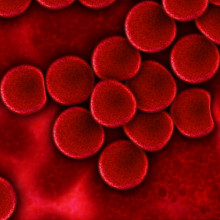
- Intestinal breathing success during hypoxia
Intestinal breathing success during hypoxia
Takanori Takebe, Tokyo Medical and Dental University and Cincinnati Children's Hospital
One of the many lessons we learned from the COVID 19 pandemic is the importance of having sufficient ventilators and other breathing aids to save the lives of people in hypoxic respiratory failure - where they are not getting enough oxygen into their blood to survive. Now, a group of scientists have taken inspiration from the aquatic world of sea cucumbers, freshwater fish called loaches, and the so called bum-breathing turtles, to develop a new approach. Termed ‘Enteral ventilation via anus’, the technique uses either a steady oxygen flow or the injection of a highly-oxygenated liquid into the anus, with remarkable, life-saving results in mice, rats, and even pigs. Takanori Takebe of Tokyo Medical and Dental University and Cincinnati Children’s Hospital, and lead author on the study, spoke to Eva Higginbotham…
Eva - Although it might seem strange to us, breathing through your backside has some advantages for the animals that do it. For example, the Fitzroy River turtle in Australia, sometimes affectionately called the bum breathing turtle, can stay underwater for up to three weeks at a time, thanks to this ability. And thanks to new research out of Tokyo's Medical and Dental University and Cincinnati's Children's Hospital, intestinal breathing might soon be something we humans are getting comfortable with.
Takanori - We started looking more carefully about the interanus application of oxygen, which turned out to be very effective.
Eva - That's Takanori Takebe. He and his team have devised two new approaches for getting oxygen into the blood of mice, rats, and pigs, and both take advantage of the fact that the mammalian rectum, that's the last bit of the large intestine before the anus, is both supplied with loads of blood vessels and has a fairly permeable membrane for gases to cross over, making it an excellent part of the body to adapt as another site to breathe from.
Takanori - One is a very intuitive approach we just intubated, from the anus, just to provide oxygen gas continuously. This oxygen delivery is really able to persist survival in lethal conditions. Even up to 60 minutes or even longer.
Eva - 60 minutes of breathing through the rectum just by pumping in oxygen. Sounds amazing, but also like you could get a bit uncomfortable. The more clinically relevant approach uses a liquid that's very good at dissolving oxygen, perfluorocarbon or PFC. This liquid is already used by doctors during some ice surgeries and sometimes as a type of synthetic blood for transfusions. So we already know that it's safe for humans.
Takanori - So that liquid ventilation approach is also having greater impacts on oxygenation. So as to really rescue those fatal hypoxic conditions in the mouse, rats, and pig model system.
Eva - Incredibly, Takanori showed that when just less than a pint of this PFC was injected into the anus of pigs, they would stay happily oxygenated for up to 20 minutes when in respiratory failure. And they didn't stop there, by re-injecting every 20 minutes or so they could keep the pigs going for hours, or even more. Importantly though, when we breathe in and out using our lungs, we aren't just taking in oxygen. We're getting rid of carbon dioxide and other waste products too.
Takanori - Throughout the experiments. We are quite surprised to see that carbon dioxide is actually eliminated from the body. So this observation is supporting the idea that oxygen is sucked up into the circulatory system. And whereas carbon dioxide is eliminated from the body as if perfluorocarbon is working as a breathing or gas exchange in the rectrum regions.
Eva - Takanori imagines that this new technology could be life-saving if deployed in ambulances for people being rushed to hospital, unable to breathe, or in hospitals for COVID patients who require extra oxygen or where there are limited mechanical ventilators. And he's also been approached by some other characters.
Takanori - Yeah. We actually had a discussion with an astronaut yesterday, and he is really excited to apply to space applications, particularly in emergency conditions. So there are a number of potential scenarios. We can envision the application of the intestine breathing approach, not just for medicine, but also for more broader context. So that was really exciting to me
Eva - Who knows, perhaps in the future, you'll be scuba diving without a gas canister to lug around with you. And instead with a more subtle breathing apparatus to keep you going.

- Blind Dates and Heart Rates
Blind Dates and Heart Rates
Eliska Prochaskova, Leiden University
While fireworks have been filling the skies over this past week, sparks flying between two people pursuing a romantic connection is less of a given. But there might be a way to find out which couples are destined to click: if their heart rates synchronise when they see each other! Julia Ravey…
Julia - They look all right actually. Definitely not. Oh, that's a cute dog. Right up my street. It's a match. When it comes to finding a potential partner, it's hard to know what to look for. A great sense of humor, intelligent conversation, a matching pulse. Well, maybe the last one is what matters. With millions of people in the UK turning to dating apps, our criteria for finding ‘the one’ can be applied before we even go on a date. But sometimes no matter how much a person may be your type on paper, when you meet them face-to-face that connection, that spark is missing. So we decide 'they're not for us' and we move on to the next swipe right. A big question I've always had is what is that spark? So many of us use it to determine if a person is a good fit, but what gives us the physical green light? I spoke to...
Eliska Prochaskova - Eliska Prochaskova and I'm a researcher from Leiden University.
Julia - Who thinks she may have cracked the connection code.
Eliska Prochaskova - When people are looking for a romantic partner, they want to have chemistry. They want to feel a connection with that partner. And while this is something that everybody says, it's really hard to describe what it actually is and can we measure it?
Julia - Eliska and her colleagues, tested this by setting up a blind date experiment. Two people would enter compartments of a space separated by a sliding hatch. They would then do a '3, 2, 1, big reveal' for a few seconds to let the participants rate each other on physical attraction alone. They then let the dates chat for a few minutes and just be in each other's company.
Eliska Prochaskova - At the end, we asked them again how attractive the partner is. We also asked them whether they wanted to go on another date. This really allowed us to see how the attraction changes over the period of dating, and whether they become more attractive.
Julia - This was all while wearing devices, which measured their heart rates, how sweaty they got, and track their eye movements. But these devices definitely didn't get in the way.
Eliska Prochaskova - They completely forgot they're wearing them and we could see a person running and wanting to go to the toilet. We had to stop that person because we're like "We can literally see what you're doing".
Julia - Although the participants in the study show gestures we associate with being attracted to someone, like eye contact and smiling, Eliska found a different measure was the best at predicting attraction.
Eliska Prochaskova - We measured all different types of expressions. So, we measured nonverbal, smiling, laughing, and flirtatious behavior, we also measured eye contact. What we realised was that the main predictor of this click or this chemistry which people have, was the synchrony between the partner's heart rates and their skin conductance, which are unconscious responses which you cannot control. The more synchronized, the more attracted the partners become to each other.
Julia - Why do you think heart rates matching up might influence attraction?
Eliska Prochaskova - At the moment, scientists know that synchrony between people's physiology like heartily skin conductance happens in many different contexts. It's a phenomenon which we, for example, observe between mother and child, when there are, for example, hugging or when they're playing. From that, we know that this kind of synchronicity often leads to powerful bonding.
Julia - With so many of us now dating online this research can teach us how to increase the chance of having that spark on a first date.
Eliska Prochaskova - About 50 million people who are dating online, using different types of apps, they base their choice on attractiveness. What we observe in our study, what is really important for two people to really establish this connection, is a level of emotional synchronicity, what the physiology actually measures. That means that it's important that people actually put their emotions out and therefore reveal their emotions in order for the other person to explore them, to see them, and also feel them in their own body.
Julia - So there you have it, be open and vulnerable or a first date may be the key for allowing that spark to ignite. Or alternatively, ask your date to come equipped with a heart rate monitor, and put your scores on the doors at the end of the night. "Second date? Nah mate. You were a solid 74 beats per minute, when I was running on an 81. All the best for the future."

- Marie Antoinette's love letters laid bare
Marie Antoinette's love letters laid bare
Anne Michelin, Sorbonne University
Let’s step back into the past now to Paris in the late 1700s. It was the time when the French Queen, Marie Antoinette, was under house arrest during the revolution. She corresponded prolifically during that period with the Swedish Count Axel von Fersen, with whom she was alleged to be intimately involved. He kept many of her letters, which now sit in the French national archives, but, ever the tease, someone scribbled out key parts of the text - possibly the bits that might have got him or her into trouble. Now though, researchers have used an X-Ray technique to see through those redactions by subtracting the differing signals of the ink used for the scribbling-out from the one Marie Antoinette wrote with. Anne Michelin, from Sorbonne University, took Harry Lewis through the story...
Anne - This correspondence was separate correspondence between Marie Antoinette and Axel von Fersen in 1791 and 92. It's the end of the life of the queen. She's in jail. We are in the middle of the revolution and it's not really good for the Royal family in France. She realises the situation, she sees that it's not a good time for her and so she writes to Axel von Fersen, which is a very close friend and she writes about the political situation, but also on her feelings. This correspondence is special because some parts of it are redacted. It's very black. You can't see anything. It's impossible to read the text and so it was something that the curator from the national archives asked us if we can read the texts.
Harry - Anne do you have any of those words available? Would you be able to read a short part where something's been redacted?
Anne - It's something like, my dear friend I love you madly and I can't be a moment without adoring you. Something like that. Not exactly, but something like that.
Harry - The big question there is, how do you see underneath the reductions? How do you know what the letters are?
Anne - It's all iron gall ink. Iron gall ink are inks that contain iron sulfate but also other metallic elements like copper and zinc. There is some slight difference between the inks and we use techniques, x-ray fluorescence spectroscopy, that analyse the compositions of the inks. Just the sensor on the paper, and we record the spectrum in each pixel. In each pixel of the letters we record a spectrum.
Harry - Then when you transfer that x-ray to the screen and you put that into a digital format through looking at each pixel you can see where the spectrum changes and the different elements are present. You can build up a visual picture like that?
Anne - Yeah, yeah. Like that. We have some parts where we are only the writing ink, the original ink, and some parts where we are sure there is only the reduction ink. It's like that. We can see if we have the same composition or if we have something really different.

- New tech to stop rail delays
New tech to stop rail delays
Roger Lewis, University of Sheffield
We’re well into Autumn now which often ushers in a perennial problem: leaves on the line and delayed trains. It seems bizarre that something as mundane and fragile as leaves can bring public transport to a halt in the 21st Century, but it is a serious problem. Tannins in leaves react with iron in the rails to produce a super-slippery surface that the train wheels slide over. Thankfully, mechanical engineers at the University of Sheffield may soon be riding to our rescue with a way to make this commuting catastrophe a thing of the past. Sally Le Page reports…
Train announcment - We are sorry to announce that the 1822 train to Cambridge has been delayed due to leaves on the line. We are sorry for any inconvenience caused.
Sally - Ugh, the announcement we all dread to hear. But leaves? Why are high-tech trains in the 21st century thwarted by leaves? Roger Lewis explains.
Roger - Every autumn as the leaves are falling from the trees, these are crushed by the passage of trains and you get some chemical reactions taking place in the interface that create this black material that adheres to the railway track very well. You'd find it very hard to scratch it off even if you were poking the track with a screwdriver or a metal blade, which means that trains struggled to brake safely, but also to accelerate away from stations which causes delays and makes passengers unhappy.
Sally - So the leaves are chemically bonded to the track. It's not just like when I'm walking on the pavement and the leaves are all wet and mushy, it's a bit slippy. It's more than that.
Roger - It is more than that.
Sally - And how do we currently deal with them?
Roger - So at the moment, network rail use what are called railhead treatment trains, which fires water at the rail head under very, very high pressure. The pressure is so high that if the train stopped and the water kept going, it could possibly cut through the rail.
Sally - Cut through solid steel?
Roger - Yeah.
Sally - That is incredibly high, and must use a lot of water as well.
Roger - It does. This is one of the problems with the trains. They can only run a certain distance before they need refilling.
Sally - So your solution involves using dry ice. What is dry ice, other than the thing you put in fancy cocktails to make them go all smoky?
Roger - The pellets we use are basically solid carbon dioxide. Now that sounds very bad. We don't like carbon dioxide at the moment, but actually all the carbon dioxide we use is recaptured from other industries that are putting it out into the atmosphere. So most of it comes from the fertiliser industry. Basically you have to compress it under very high force so that then it turns into a solid. Then you have to keep it very cold to keep it solid. So when it comes out of our machine and hits the railhead, it's at about minus 70 degrees centigrade.
Sally - How are you using dry ice to remove this slippy layer from the track?
Roger - We fire it onto the top of the railway track in a stream of air, which is actually going at supersonic speed. So you've got these pellets going at very high speed. Because they're cold they make the leaf layer brittle. And then because they're back in the atmosphere, they turn back into a gas. So you've got lots of little air explosions, almost, across the top of the railway track. So you've got three mechanisms there which are acting to break up and remove the leaf layer.
Sally - I'm imagining a machine gun firing continuously little ice pellets. Does it look anything like that?
Roger - That's kind of how it works, but that's not how it looks. It doesn't look as exciting as that, I'm afraid.
Sally - You've got these dry ice machine guns strapped to passenger trains. Can they just run as normal? Will this happen during the normal commute from London to Cambridge, or does the train have to be going particularly slowly for it to work?
Roger - That's a good question. At the moment, railhead treatment trains, for example, are designed to run at 60mph. A lot of passenger trains on local lines would typically run at that speed or a bit less. So we've obviously been targeting high speed operation. We were testing it on a full-scale wheel rail test at 60mph. We've run on track on a train at 40mph. And hopefully this autumn we'll be able to go a little bit faster. The good thing about cleaning on a passenger train is that hopefully we'll be able to stop the really heavy contamination building up. So if we can clean more frequently, we can do a lighter clean, which is obviously much easier at higher speed.
Sally - It's a bit like brushing your teeth often so you don't have to go to the dentist and get horrible treatments done.
Roger - Yes, quite.
Sally - And how long do you think it's going to be until we no longer have the dreaded announcement of "this train has been delayed due to leaves on the line"?
Roger - I'd like to say very soon. I think our systems will be underneath trains probably within a couple of years, but we can use it already on a railhead treatment train or road-to-rail vehicles. So we're already cleaning the track with it
Sally - And it can't come soon enough. Now, when is that next train arriving?
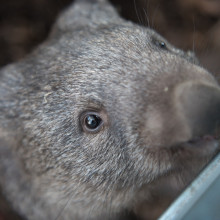
- How wombats poo cubes
How wombats poo cubes
David Hu, Georgia Tech
You can’t fit a square peg through a round hole, as English writer Sydney Smith said in around 1805. But now it’s 2021, and scientists have shown how wombats can - using their cube-shaped poo! Eva Higginbotham spoke to scientist David Hu...
David - Wombats are marsupials: the size of an obese toddler, the face of a teddy bear, and the nose of a koala. And they don't like each other; they like to live in sort of separate territories. What people most know them for is the way they defend their territories, and they do it with little flags of faeces. They make latrines as tall as a wombat can climb with its short stubby legs, which is not very tall: usually a stump or a rock. And they'll get on top of this rock and defecate. They defecate about a hundred cubes a day and they'll leave about ten or so as a calling card.
Eva - I cannot believe that! A hundred times a day? And they're building essentially a tower of poo outside their house?
David - Yeah, they're separate latrines, and they'll dump a hundred cubes dispersed among the various latrines. For years people had known that these wombat faeces are different from all the other mammals, that they're cubic, but no one knew exactly how an animal can make anything that's this strangely shaped. They're kind of the size and colour of a Godiva chocolate or an Almond Joy minibar with one nut, but they smell like grassy poop, and are probably not very tasty.
Eva - Ha! Thank you. So what did you do?
David - Our first task was finding a good collaborator. So we sought out Scott Carver who's a wombat expert and works with wombats. And he shipped us intestines - full, intact intestines, and wombat faeces - through the mail. It was around Christmas time, so it was one of the best Christmas presents I've ever gotten, wombat intestines. We opened them up and they had tiny little presents inside. I was very happy to see them.
One of the first discoveries we made was that the cubes happen inside the wombat. They start out as a yoghurt-like slurry, and they eventually solidify, dry. In the last metre of the intestines or so they were just a factory line of cubes. And so it was amazing to see inside the body, going from a sort of amorphous and sort of strangely shaped solid, to something that had edges and flat faces.
The other thing that we noticed is that the cubes were arranged very nicely. When we hung the intestines from the ceiling, we noticed that after they finished swinging, all the corners and edges of the intestines aligned. And that meant that the cubes... they had a clock in the intestines that was telling them where to make the corners and where to make the flat faces. So we knew there was something in the intestines themselves that was communicating where to put the different parts of the cube. We performed these materials tests and measured how much it stretches, and we found that there are certain stripes on the intestines that stretch less than the others. So some parts of the intestines are four times as stretchy as the stiff parts. The rest we had to turn to mathematical modeling to basically simulate oscillation of the intestines, try to simulate the properties of faeces, and see how the two would interact until we got corners and flat faces.
Eva - So you went into the model knowing that, "okay, so the intestines have a more stretchy bit and a less stretchy bit." You input that into a computer algorithm. And then what happens?
David - We wrote the equations for how the intestine should move if they're contracted like a muscle. And over many, many contractions, we saw that the stiff sections would produce corners at their midpoint.
Eva - How long is wombat faeces inside the wombat?
David - So when we eat something, it's basically out of our bodies in one to two days, and a wombat is three to five days. And in part that's because they're very drought tolerant; they want to capture as much water as possible from the faeces before it leaves. And it's also that time that allows the intestines to do their sculpting work. Faeces, as it gets drier, gets very, very solid-like. The longer time it takes allows the corners to get formed a little bit more like a square.
Related Content
- Previous IVF embryos are more successful than expected
- Next Happy Halo-days










Comments
Add a comment